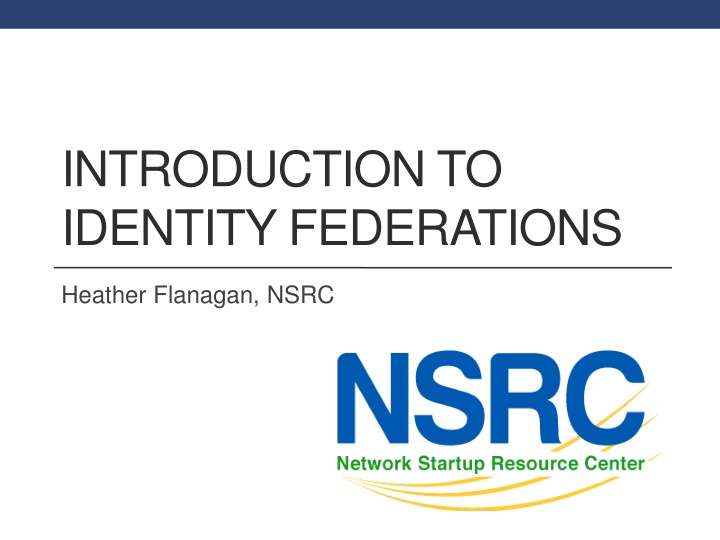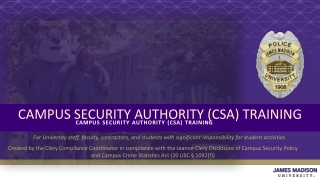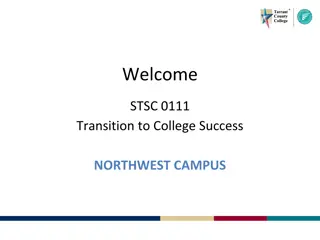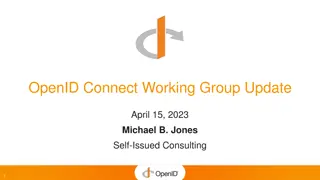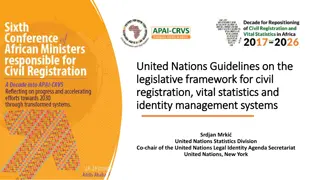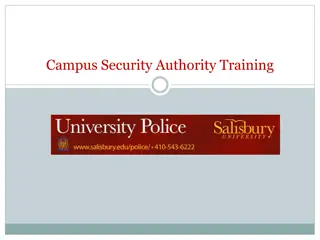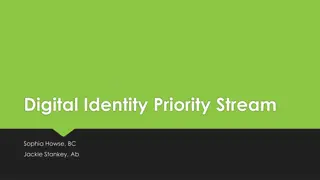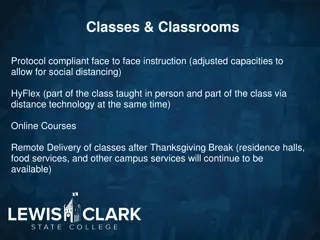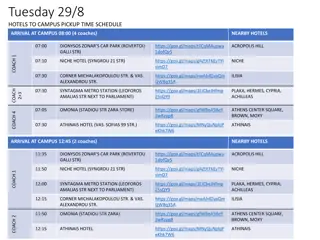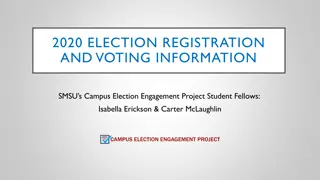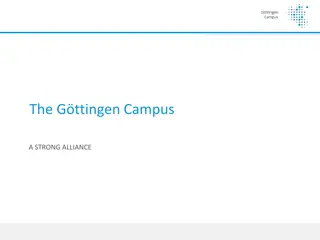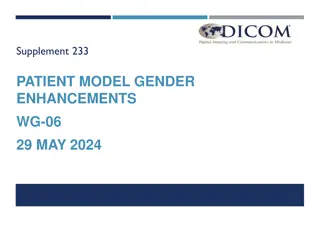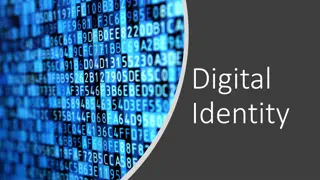Introduction to Identity Federations in Campus Settings
Explore the concept of identity federations and their role in enabling trusted access to online resources for campuses and institutions. Learn about the benefits, building blocks, and implications for identity management in a global community.
Download Presentation

Please find below an Image/Link to download the presentation.
The content on the website is provided AS IS for your information and personal use only. It may not be sold, licensed, or shared on other websites without obtaining consent from the author.If you encounter any issues during the download, it is possible that the publisher has removed the file from their server.
You are allowed to download the files provided on this website for personal or commercial use, subject to the condition that they are used lawfully. All files are the property of their respective owners.
The content on the website is provided AS IS for your information and personal use only. It may not be sold, licensed, or shared on other websites without obtaining consent from the author.
E N D
Presentation Transcript
INTRODUCTION TO IDENTITY FEDERATIONS Heather Flanagan, NSRC
Learning Objectives How to bring identity management and identity federation to your campus or region Why identity management is important, and what federations have to offer How to build a business model that in support of identity federation on your campus How identity federation can enable campus services and research What policies and operational practices you need to have in place How to engage with the global R&E community
What Is Identity Federation? a common framework for trusted shared management of access to on-line resources InCommon ...identities from one organisation may use Shibboleth [or another authentication service] to gain federated access to services hosted by another organisation. Membership of a federation places obligations on members which allow members to trust identity assertions provided by other members. JISC
Building Blocks of Federation Attributes Identity Provider / Service Provider Discovery Federation Tools Metadata Policy
Who Benefits? Students and Researchers Students and researchers more collaboration opportunities potential access to more resources and data The more efficient utilization of resources easier research collaboration can be setup within hours rather than days/weeks easier to share or move data between sites/nodes - where relevant research community
Who Benefits? The Campus The campus or institution a solidly branded institutional identity which improves the overall reputation of the organization a stronger security profile for the network an ability to logically budget for the network based on actual data (who is on the system, how quickly is it growing, where are the bottlenecks) fewer bilateral contracts; more organizations can function under a common framework Identity federation participants could spend time establishing operating principles, technology hooks, and agreed-upon data exchange elements with each partner; or they could do it once through the federation and then leverage these common elements for many relationships. -- InCommon
Benefits/Compelling Reason to Act Authentication-related calls to Penn State University s helpdesk dropped by 85% after they installed Shibboleth Reduces work Provides current data Studies of applications that maintain user data show that the majority of data is out of date. Are you protecting your app with stale data? Insulation from service compromises In FIM data is pushed to services as needed. If those services are compromised the attacker can t get everyone s data. Minimize attack surface area Only the IdP needs to be able to contact user data stores. All effort can be focused on securing this one connection instead of one or more connections per service.
What Are Some Compelling Service Possibilities? eduroam eduGAIN digital libraries licensed software Learning Management Systems Wikis Cloud service providers supporting research and education Researchresearch.com Qualtrics AWS Research Grants
What do Federations do? Some federations Provide self-service tools for managing IdP and SP data (Resource Registry) Provide application integration support Host or help with outsourced IdPs (IdP in the Cloud, hosted IdP Provide tools for managing "guest" users Develop custom tools for the community Most federations also Define agreements, rules, and policies Provide some user support (documentation, email list, etc.) Operate a central discovery service and test infrastructure At a minimum a federation maintains the list of which IdPs and SPs are in the federation
How to Make Federated Identity Work Start with establishing campus identity systems Base-level requirements: centralized campus or institution identity store (e.g., database, LDAP directory) documented policies regarding the life cycle of organizational identity a business model for ongoing development and support
Additional Reading Material Ready the Pipes Campus Technologies. https://campustechnology.com/articles/2010/03/01/ready- the-pipes.aspx Lowering costs of identity proofing by federated identity management Swedish Alliance for Middleware Infrastructure. http://www.incommon.org/docs/other/SWAMI_federated_i dm_roi.pdf Identity Management Toolkit JISC. https://identitymanagementinfokit.pbworks.com/w/page/50 989755/Home
The NSRC cultivates collaboration among a community of peers to build and improve a global Internet that benefits all parties. We facilitate the growth of sustainable Internet infrastructure via technical training and engineering assistance to enrich the network of networks. Our goal is to connect people. www.nsrc.org
